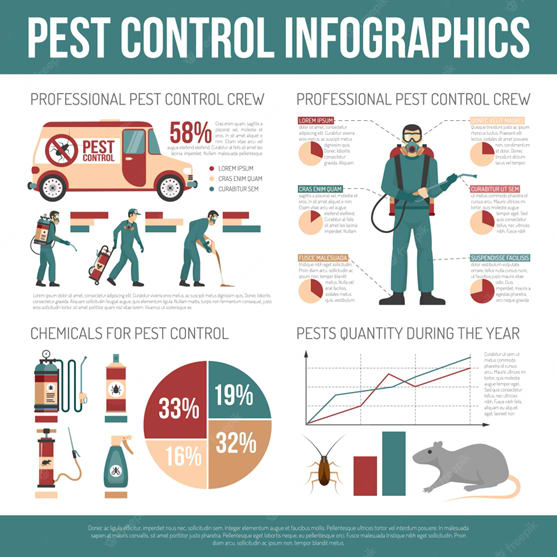Keeping an clean as well as sanitary house is vital not just for one's physical health but also for effective pest management. Numerous individuals underestimate this close connection that exists between a person's residence's cleanliness and the existence of pests. Dirt, food particles, and disorganized areas offer a suitable environment for typical household insects, making it essential to emphasize cleaning practices in your one's pest prevention strategy. By grasping the impact of cleanliness on pest management, you can implement proactive measures to ensure one's living space void of unwelcome guests throughout the year.
In this resource, we shall examine the different aspects of managing pests plus hygiene. Starting with identifying frequent pests such as spiders and lice and challenging prevalent misconceptions about do-it-yourself approaches, we will offer you with the ultimate resource to developing an pest-free home. You shall discover the significance of how crucial regular pest inspections, how often to schedule expert interventions, and actionable tips for each season to make certain that your living space stays safe. Regardless of whether you encounter issues from rats during the winter months or mosquitoes during summer time, organized home will significantly enhance your pest control strategies plus ensure the safety of the health of your family.
Grasping the Connection Between Sanitation and Pest Control
Keeping high levels of hygiene in your house is essential in preventing pest infestations. Filthy areas attract various pests, including rodents, insects, and other undesired animals that thrive in unhygienic environments. Food scraps, spills, and mess provide perfect breeding grounds for vermin, making it imperative to keep kitchens and dining areas neat. Regularly brooming, wiping, and sanitizing surfaces can significantly minimize the attractiveness of your home to intrusive species.
Additionally, proper waste management holds pivotal role in bug control. Keeping trash in sealed containers, getting rid of waste regularly, and ensuring that your garbage bins are well-maintained can discourage bugs from being drawn to your residence. Furthermore, outdoor areas require similar attention; overgrown vegetation and stagnant water can create inviting environments for pests. By maintaining tidiness in both indoor and outdoor spaces, homeowners can establish a less inviting atmosphere for undesired critters.
Recognizing the relationship between hygiene and pest control also involves recognizing the signs of infestations early. Regular inspections for common household bugs can prevent small issues from escalating into significant infestations. When your home is clean and well-maintained, it's easier to spot the early warning signs of bugs, such as droppings or signs of destruction. Ultimately, a clean house not only promotes good health but also serves as a formidable barrier against bug control issues.
Successful Tactics for All-Year Pest Control
Keeping a pest-free environment requires constant vigilance and proactive measures throughout the year. One of the most efficient strategies for pest control is to ensure proper hygiene. Regular cleaning, including vacuuming and wiping down surfaces, helps eliminate food particles and spills that lure pests. Ensure that trash is thrown away properly and that any pet food is closed and stored away when not in use. Creating Termite control Queen Creek makes your living space less inviting to ordinary household pests.

Another essential aspect of pest control is sealing entry points. Check your residence for gaps, fissures, and holes in walls, window frames, and doors. Even the smallest gaps can serve as pathways for pests like rodents and insects. Use sealant, weather stripping, and other materials to seal these vulnerabilities effectively. By reinforcing your house's defenses against unwanted visitors, you can significantly decrease the likelihood of infestations throughout the seasons.
Lastly, consistent inspections and professional pest control services should be part of your proactive strategy. Scheduling periodic inspections can help detect potential pest issues before they escalate. Professionals have the expertise and tools to find signs of pests that might go unnoticed. Moreover, engaging in seasonal pest control treatments can preemptively address specific pest threats associated with each time of year, ensuring that your house remains secure throughout the year.
Widespread Fallacies Regarding Pest Control Corrected
One common myth is that having a clean home will completely eliminate pests. While good hygiene definitely helps minimize the risk of infestations, it is not a foolproof solution. Pests can find their way into homes through tiny cracks and crevices, in search of shelter and food. Therefore, relying solely on cleanliness can lead to complacency and ultimately invite unwanted visitors. Frequent inspections and preventative measures are essential to truly keep your home pest-free throughout the year.
An additional misconception is that DIY pest control methods are equally effective as professional services. Many homeowners misunderstand the complexities of pest behavior and treatment options. DIY approaches frequently fail because they do not address the root causes of infestations or the particular needs of diverse pests. Specialists are trained to identify the source of the problem and apply specific solutions that ensure lasting results.
Ultimately, there is a belief that all pests are harmless and do not pose serious threats to health or property. This is far from true. Pests like cockroaches and rodents can carry diseases, while termites can cause severe structural damage to a home. Understanding the dangers connected with pests is vital for effective prevention. By debunking these myths, homeowners can make educated decisions about pest control and maintain a cleaner living environment.
